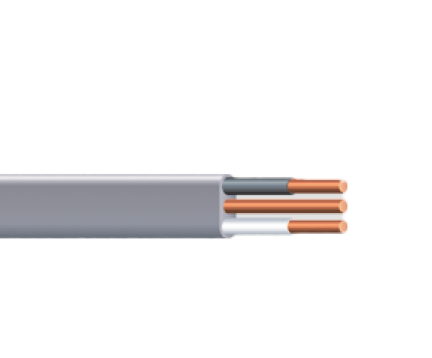How to Choose the Right Cable for Your Residential Wiring Needs
When it comes to the intricate web of wires that power our homes, one size doesn't fit all. Whether you're embarking on a new construction project, renovating your space, or simply addressing an electrical issue, the right choice of cables is crucial for safety, efficiency, and functionality. In this guide, we'll provide insights on how to select the appropriate cables for various household wiring applications.1. Identify Your Wiring Requirements
Manufacturing facilities operate around the clock, placing immense demands on electrical systems. Industrial wiring solutions must be robust enough to handle high electrical loads and ensure uninterrupted operation.
● Living Room and Bedrooms: For general lighting and power outlets, Romex (Non-Metallic Sheathed Cable) is a versatile and commonly used option. It is easy to work with and suitable for dry indoor locations.
● Kitchen: Given the moisture and heat in the kitchen, it's advisable to use NM-B (Non-Metallic Sheathed Cable) with moisture-resistant insulation. This cable is suitable for powering appliances and lighting in this high-activity area.
● Bathrooms: Bathrooms are humid environments, and wiring should be chosen accordingly. Cables with moisture-resistant properties, such as NM-B with appropriate insulation, are recommended to prevent damage from humidity.
● Outdoor Spaces: For wiring in outdoor areas, consider UF-B (Underground Feeder Cable) or cables with UV-resistant insulation. These cables are designed to withstand exposure to the elements and are commonly used for outdoor lighting and outlets.
● Attic Spaces: These areas can experience temperature extremes. THHN/THWN wires are a good choice, especially if you plan to run them in conduit. They are versatile and suitable for both dry and wet locations.
2. Consider Electrical Load and Ampacity
Understanding the electrical load and ampacity requirements of your appliances and devices is crucial. Each cable has a specific ampacity rating, indicating the maximum current it can carry safely. Ensure that the selected cable can handle the load without risk of overheating or performance degradation.
3. Evaluate Environmental Factors
Different areas of your home may expose cables to varying environmental conditions. For instance, cables in the kitchen may encounter moisture or heat, while those in the attic might face temperature extremes. Choose cables with appropriate insulation and protection to withstand these environmental factors. Look for cables with insulation designed for specific applications, such as moisture-resistant coatings for bathrooms or UV-resistant materials for outdoor wiring.
4. Comply with Building Regulations
Adherence to local Building Regulations is non-negotiable when it comes to residential wiring. These regulations are in place to ensure the safety and functionality of electrical systems. Check with your local council to understand the specific regulations governing residential wiring in your area. Choose cables that meet or exceed these standards to guarantee a safe and compliant installation.
5. Seek Professional Advice
If you find the process overwhelming or if your project involves complex wiring scenarios, don't hesitate to seek professional advice. Consulting with an electrician or a knowledgeable expert can provide valuable insights and ensure that you choose the right cables for your project.
Navigating the vast amount of residential wiring doesn't have to be a daunting task. Armed with a clear understanding of your project requirements, knowledge of cable types, and consideration of crucial factors such as ampacity and environmental conditions, you can confidently choose the right cables for your residential wiring needs.

